"RIDERS OF THE SIDHE" by John Duncan
In Irish lore, The Sidhe (pronounced shee), or Aos Sí (shee), were descendants of the pre-Celtic inhabitants of Ireland. They are members of a powerful supernatural race comparable to the fairies or elves of old. They are often called the Kings and Queens of the Fairies. However, they are neither winged nor diminutive, and are in no way like the cute little fairies of our modern-day imagination.
Rather, Aos Sí (as I will refer to them throughout this post) are otherworldly beings who resemble humans in size and appearance. (Many call them The Sídhe, but that is incorrect, sídhe being the Irish word for mounds. Rather, they are Aos Sí, "People of the Mounds".)
Detail from the John Duncan painting shown above
Aos Sí were descended from the "Tuatha Dé Danann" who settled in Ireland millenia ago. When the Milesians arrived in Ireland from Spain, they found these "people of the Goddess Danu", described as "gods but not gods", a race of beings somewhere in between the two. It is said that they came from heaven, on account of their intelligence and vast knowledge.
The Milesians fought the Tuatha Dé Danann and defeated them. As part of their surrender terms, the Tuatha Dé Danann agreed to retreat and dwell underground in the hollow hills, or sídhe, where it is said they remain to this day as Aos Sí, also called "Daoine Sídhe" (pronounced deena shee).
Each leader of the distinct tribes of the Tuatha Dé Danann was given one mound. Every king or queen has his or her own palace where they feast and play music. They also have regular battles with neighboring tribes.
"FAIRY QUEEN MEDBH OF THE SIDHE"
by Howard David Johnson
In addition to living under fairy mounds, Aos Sí are variously believed to inhabit fairy raths and cairns or to live in the land of "Tír na nÓg", a mythical island to the west of Ireland.
No matter where they abide, it is in an invisible world that coexists with the world of humans, a different dimension of space and time other than our own. This world is described as a parallel universe in which the Aos Sí walk amongst the living.
"Water Sidhe" by ArwensGrace
Belief in this race of beings who have powers to move quickly through the air and change their shape at will once played a huge part in the lives of people living in rural Ireland and Scotland.
Down through the ages the Aos Sí have been said to be in contact with mortals giving them protection, healing them and even teaching them some of their skills - smithcraft or the working of metals being one such skill. In a just battle, they will fight beside mortals. When they fight, they go armed with lances of blue flame and shields of pure white.
In folk belief and practice, the Aos Sí are often propitiated with offerings, and care is taken to avoid angering or insulting them. Often they are not named directly, but rather spoken of with euphemisms such as "The Good Neighbors," "The Fair Folk," or simply "The Folk", in the hope that if humans describe them as kind, they are more likely to be so. Other names are "The Gentry", "The Lordly Ones" or "The Good People".
"SIDHE OF THE MOOR" by Alexandra Dawe
Aos Sí are generally benign until angered by some foolish action of a mortal. Many trees and mounds are considered under their protection and if a mortal destroys or damages these then a curse is put upon him and his family. In some parts of the countryside people would not build their houses over certain "fairy paths" because of the type of disturbances which would ensue.
However, Aos Sí are notorious for destroying wheat and the goodness of the milk. To propitiate them, the people of Ireland leave them offerings of milk and butter.
Aos Sí are fierce guardians of their abodes - whether that be a fairy hill, a fairy ring, a special tree (often a hawthorn), or perhaps a particular loch or wood. The Gaelic Otherworld is seen as being closer at the times of dusk and dawn, therefore this is seen as a time special to the Aos Sí, as are some of the festivals such as Samhain, Beltane and Midsummer. Whenever a host of the Aos Sí appears there is a strange sound like the humming of thousands of bees and a whirlwind or shee-gaoithe appears.
"THE SHINING FOLK", Larry Elmore
Belief in Aos Sí has survived for thousands of years.The hold that they had on the Celtic mind was so strong that the new religion of Christianity could not shake it. In "The Colloquy of the Ancients", a dialogue which supposedly took place between St. Patrick and the ghost of Caeilte of the Fianna, St. Patrick is amazed to see a fairy woman coming out of the cave of Cruachan, wearing a green mantle with a crown of gold on her head.
Whereas the fairy woman is young and beautiful, Caeilte himself is old and withered. When Patrick enquires of this, Caeilte tells him: "She is of the Tuatha De Dananns who are unfading... and I am of the sons of Mil, who are perishable and fade away".
"A WOMAN OF THE SIDHE"
by Helena Nelson-Reed
Aos Sí are sometimes considered to be nature spirits, divided into distinct categories of wood spirits, water spirits, air spirits and so on, the elemental spirits of each place.
There are guardian Aos Sí of most of the lakes of Ireland and Scotland. Lough Gur in County Limerick is a very magical place where many of The Sidhe kings and queens of Ireland can be found. The lake lies within a circle of low lying hills, but once every seven years it appears as dry land, where an entrance to the Land of Youth may be found. The lake's guardian is known as Toice Bhrean (the lazy one) because she neglected to watch over the well from which the lake sprang forth. It is believed that once every seven years a mortal meets their death by drowning in the lake, taken by the Beann Fhionn, the White Lady.
There are different types of Aos Sí, the most well-known being the Bean Sídhe, or Banshee. The word banshee simply means woman of the sídhe, but has come to specifically indicate the supernatural women of Ireland who announce an oncoming death by their wailing and keening. Her counterpart in Scottish mythology is the Bean Shìth.
"BEAN NIGHE", Artist Uncredited
Other varieties of Aos Sí are the Cat Sìth - a fairy cat, the Cu Sìth - a fairy dog, and the Scottish Bean Nighe - the washerwoman who is seen washing the bloody clothing or armour of the person who is doomed to die.
A distinction is often made between the sidhe who are seen walking on the ground after sunset, and the Sluagh Sídhe, "the fairy host" who travel through the air at night, and are known to take mortals with them on their journeys. These airborne spirits of an unpleasant nature are perhaps the cursed, evil or restless dead.
"LEANNAN SIDHE NA HEIREANN"
Artist Uncredited
Artist Uncredited















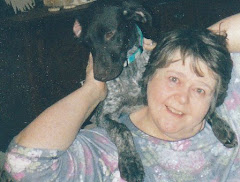



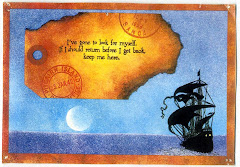














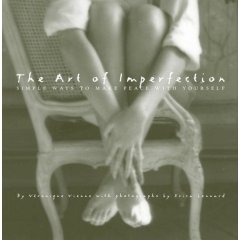
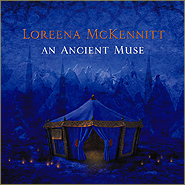

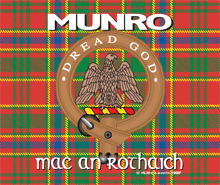
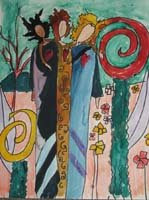

15 comments:
Brilliant post Julie, I shall read it again more carefully when I have time. The illustrations are lovely especially the first one and the Water Sidhe. Hope you have more of these lined up:)
Absolutely stunning - as always. So much to learn.
Goodness.......so much information. I'm overwhelmed. I'm going to have to come back and re-read this again!
I just am always amazed at vast resources you supply on here!
I savored this at dusk last night and came back this morning at dawn to read again. It sparkles and shines.
What beautiful images, Julie! I loved reading about this and have seen the "tir na nog" (or whatever it was) before, not knowing from whence it was derived. Truly fascinating; thanks so much for the information!
wonderful, i love coming over to visit julie, your posta are always so full of information. x
Amazing and intriguing information! Makes me want to visit the mysterious world of the Celtic past! (armchair travel of course!)
Btw, I was able to request the Tristan and Isolde DVD from our library! Looking forward to watching it.
I like your art work for the month, the daffodils very much! ,
THE SHINING FOLK is a Larry Elmore print :) either that or someone really tried hard to coppy Elmores work :)
I wanted to say thank you, because this is one of the places I read about the Aos Si race when my friend schtori34 and I created a race mod for the video game Oblivion. This was beautifully done and very inspirational :D
TreborMarg
A delightful, and romantic dance across the Daoine maite lore.
I am curious as to whether or not you will expound on the darker Fomorian, and Phooka and Pixie Ki & Black Agnes or Red Branch Cycle,and The Children of Oberon. . ?
A lot of modern society and fantasy portrays the fae/fay, so inclined to be beneficial to man, but fail to mention the Danu folk who take teeth, sit on the chest of sleepers, drink the aura of children, or the ones who steal infants and replace them with changlings. .
I thought a nice contrast would add to this page.
Best regards.
Hello! Actually I want to write a mythical history about Ireland and I got so much information after read your post. I love to read myth so much and I often search in the internet so I can have an imagination to write my novel. And once again, thank you so much!
Hi, very useful. Only feedback would be could you give some sources, as i want to do more reasearch and am drawing a blank. Many thanks
what about the male fey; or as I've heard them referred to as 'fahr sidhe'? they are the announcers of good luck, if memory holds.
Mythically speaking, can Aos Si reproduce? How would that work?
The spirit of the Highlands and and the magick of the shamrock live in so many hearts scattered all over the world. May this grow and bring an ever deeper awareness of the realities beyond. Gratitude!
Post a Comment